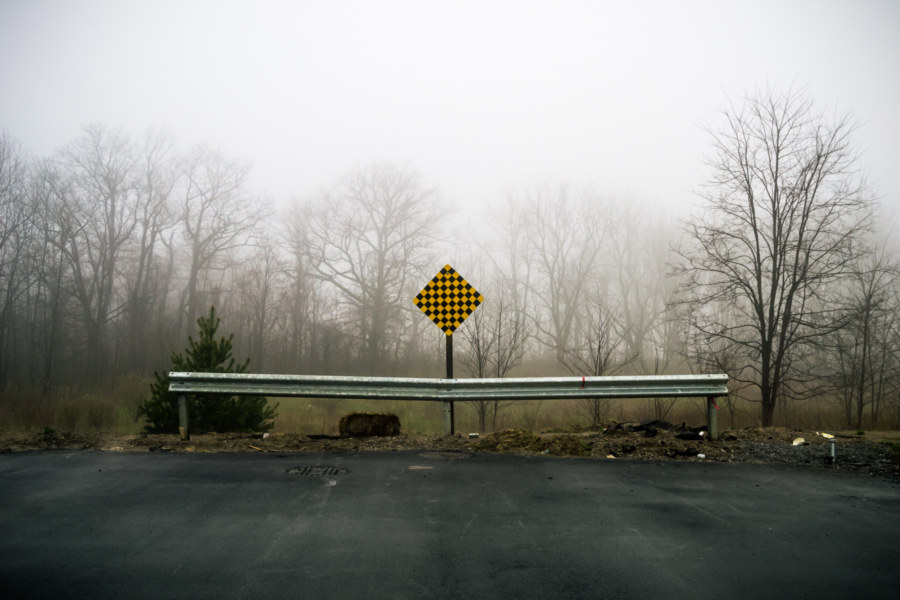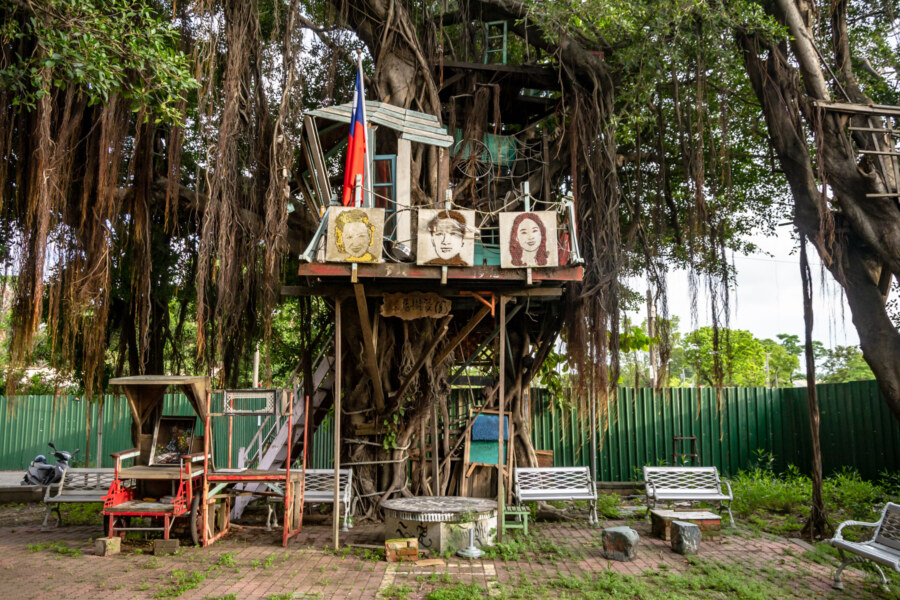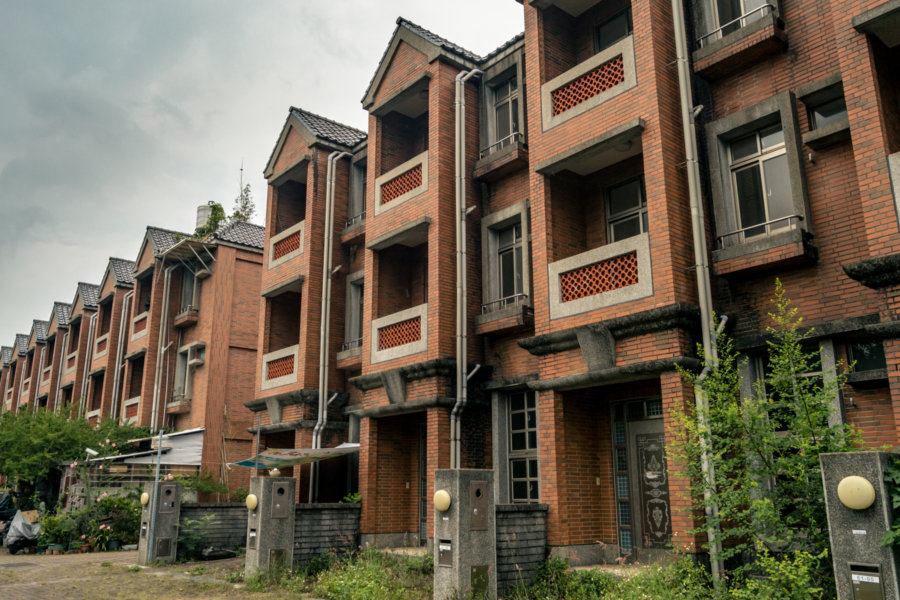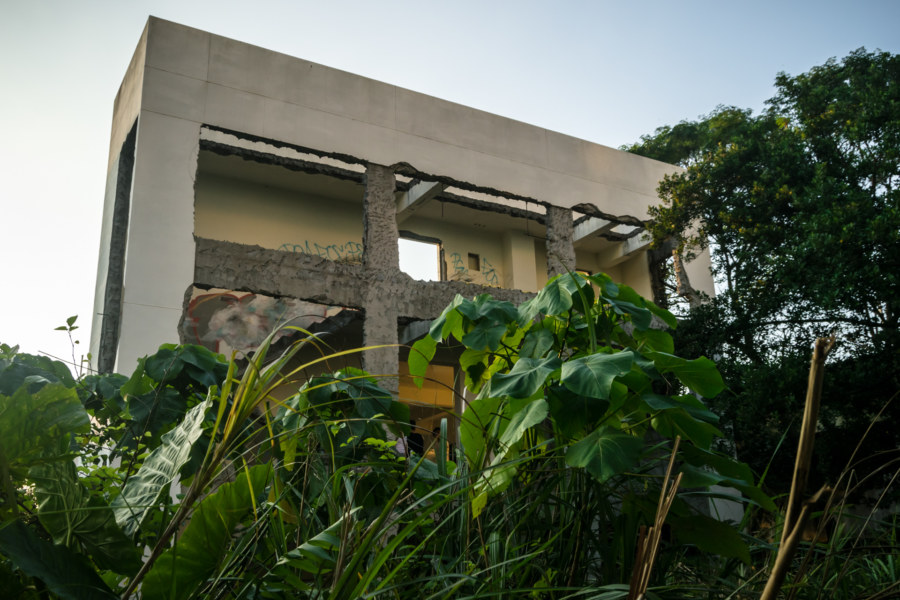The Second Air Force New Village (二空新村) is a former military dependents’ village in Tainan, Taiwan. It was established east of Tainan Airbase in 1950, primarily for members of the Republic of China Air Force and their families, and it eventually grew to become the sixth most populous of the official military villages in Taiwan. From 1950 into the 1960s several waves of construction and development increased the village to nearly 1,000 households, with a sizable number of unregistered structures scattered around the periphery. As with most other military villages this one was steadily dismantled and demolished over the course of many years in the late 2000s and early 2010s, part of a nationwide urban renewal program that relocated the remaining residents into more modern apartment blocks.

Adjacent Terms
Jinjin Theater 金金大戲院
The former Jīnjīn Theater (金金大戲院) is located midway along a major thoroughfare connecting Yingge with Taoyuan City in northern Taiwan. Technically it is still within New Taipei as the ragged border with Taoyuan swings around the theater, less than 100 meters away at some points. This second-run cinema opened to the public in 1985, screening a diverse assortment of films for as many as 900 guests in this highly industrialized suburb. It went out of business sometime around 2005 and has been mostly left to the elements since then, although food vendors still ply their trade along the sidewalk in front of the theater entrance, and some attempt has been made to sell commercial advertising space on the facade.
Kezikeng New Community 柯子坑新社區
Located on the outskirts of Zhushan, Kēzikēng New Community 柯子坑新社區 is one of several public housing projects constructed in the aftermath of the 921 Earthquake that devastated central Taiwan in 1999. Despite providing much-needed relief for those who lost their homes in the disaster there were few buyers—and today the complex remains mostly empty and disused. Built with government funds, this poorly-conceived housing project has become yet another example of what Taiwanese call mosquito halls, a term popularized by artist Yao Jui-chung 姚瑞中 and a team of student researchers known as Lost Society Document. Since 2010 they have published six volumes of Mirage, a series of works identifying more than 800 disused public properties all around the country. Some of their work was translated into English—which is how I found out about this particular locale, which I briefly visited in the summer of 2017.
On the Edge of Suburbia
I came of age on the edge of suburbia, where cookie-cutter housing projects end and the surrounding countryside begins. Decades later, again I find myself perched on the edge, further west than when I was young but still at the very end of one little patch of suburban sprawl.
Hongshulin Whiteloft 紅樹林白厝
Yesterday I seized an opportunity to combine two of my passions, the exploration of abandoned places and appreciation of underground electronic music, at a one-off techno party titled The Whiteloft (白厝). From the event description:
The Whiteloft was originally an abandoned villa where only wild dogs go to sleep. Buried deep in silver grass, just alongside the Golden Waterfront of Hongshulin, Taipei, the building hovers the Interzone between metropolis and mangrove jungle. Humdrum pedestrians seem oblivious of this colossal fortress: its skeleton rusted and exposed, leftover building materials strewn astray. Despite its shroud of mangrove leaves, the building appears raw and naked. We tried to find historical records about this building, but found nothing but total blankness, hence the name The Whiteloft.



